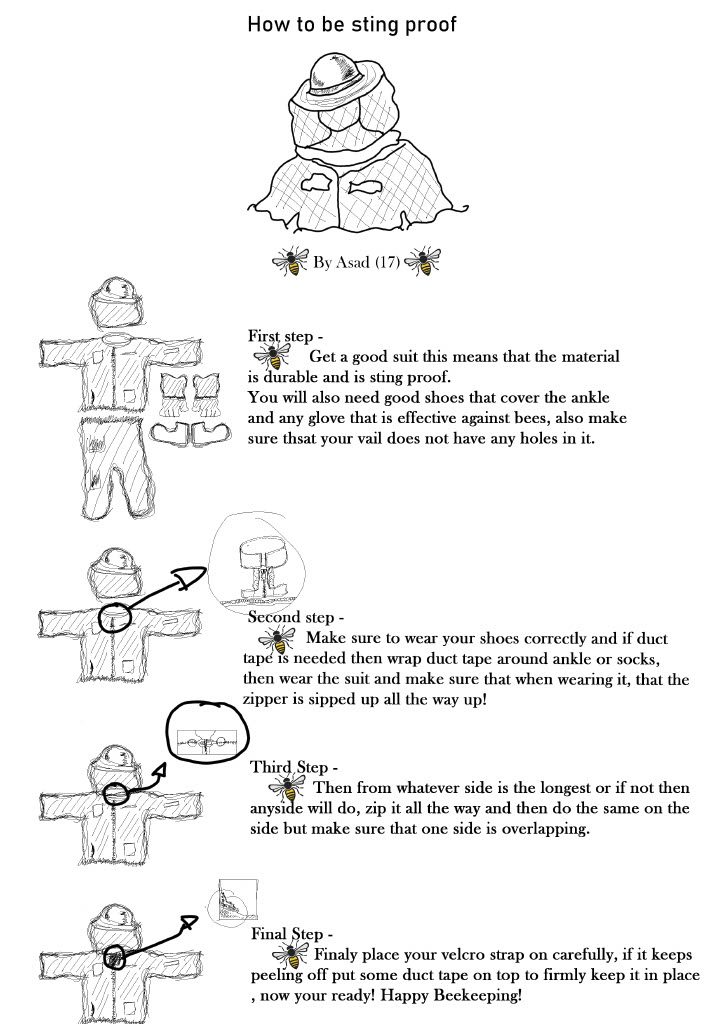Create a short “How to … “guide which can be used to help other beekeepers. Topics can be your own idea or can be selected from the following list of titles: “How to extract honey”, “How to prepare honey for sale”, “How to introduce a queen”, “How to recover wax”, “How to make candles”, “How to prepare a sample for microscopy”, “How to collect a swarm”, “How to make Mead”, “The importance of drones” etc. Please incorporate any relevant health and safety advice into your guide.
| Entrant ID: |
1311852 |
Entrant Name: |
Colin Hall |
| Description: |
Nucleus Method of Swarm Control |
| Entry: |
Initial thoughts
Many beekeepers use this technique swarm control rather than Artificial Swarm or Pagden method. A big advantage is that it requires less equipment. A drawback for some might be that it entails finding the queen. Marking your queens well in advance will make this easier.
Equipment needed
A nucleus hive – a six frame polynuc recommended, plus six drawn deep frames or deep frames with foundation.
Method
- You find that your hive going to swarm, but you think that you have not yet lost the precious queen. Go through the brood chamber again, looking for the queen. Cut out all sealed queen cells as you proceed, brushing the bees off or lightly shaking the frames to ensure that you spot every one.
- Select a good frame of stores and bees and add it to the nuc, against an end wall. Lightly plug the entrance of the nuc with grass and keep it covered as much as possible.
- When you find the queen, most probably on a frame of eggs and open brood, remove that frame. Cut out all queen cells, and place it with the queen in the nuc, next to the frame of stores.
- Then find another frame with mostly sealed brood, having again cut out every queen cell and put that beside the frame with the queen on it.
- Take at least two more frames from the brood box and firmly shake all the bees into the nuc in turn, returning the frames to the brood box. These extra bees are very important. Many of the bees, especially the older workers, will fly back to the parent colony, but enough young bees should remain in the nuc to maintain the new colony.
- Add a drawn comb next in the nuc. A shallow drawn comb is an alternative, or a deep frame with foundation. Then add two further deep frames, either drawn comb or foundation. Close up the nuc, placing it near to the parent hive with the entrance facing the other way.
- Returning to the original hive: group the brood frames and add three new frames to fill up the empty space. Replace queen excluder, supers, crown board and roof. Job done for now.
- Come back one week later. Check the nuc briefly to ensure that it has enough bees. Consider feeding lightly, ideally in the evening, to help it build up. Check the brood chamber of the parent hive, cutting out all queen cells except one well-formed cell with “peanut shell” indentations. Be sure not to miss any queen cells – including smaller emergency ones, and so brush or shake the bees off. However, treat the frame with your chosen queen cell gently – just brushing perhaps.
- Under normal circumstances, leave both units well alone for three or four weeks. By then, a new queen in the hive should have emerged, been mated and started laying…
|
| Result: |
 |
| Entrant ID: |
1313459a |
Entrant Name: |
Asadullah Ansfishi |
| Description: |
How to be sting proof |
| Entry: |
 |
| Result: |
 |



